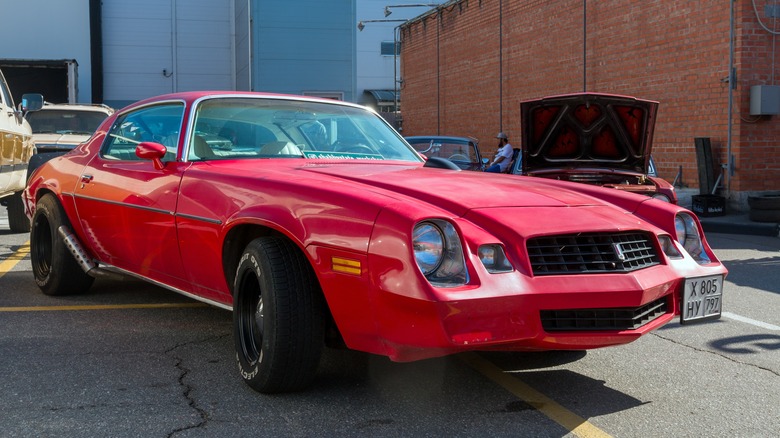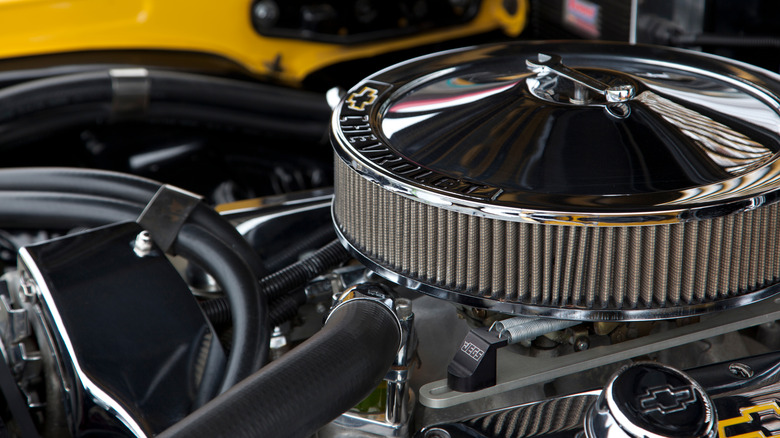What Made Chevy's 305 Small-Block V8 Engine An Underappreciated Powerhouse?
Chevrolet started production on small-block V8 engines in the mid-1950s with a design featuring 265 cubic inches of displacement. It would earn the nickname Mighty Mouse, which would be a name that would apply to future Chevy small-block V8 engines as well, like the Chevy 327 from 1961. Several of these engines have been quite popular over the years, from more recent models like the LS9 from the late 2000s to the classic 350 V8 developed in the late 1960s. The ability to build something that can generate a tremendous amount of power in such a small frame will always have its fans.
One Chevy small-block V8 you don't see gearheads talking about with such reverence is the 305, which hit the market in the mid-1970s. While it didn't have the power of the 350, which had supplanted the 327 as the popular engine in the late 1960s, the 305 was able to carve a lane for itself that made it a reliable engine during a time when reliability and efficiency were of paramount concern for both car companies and drivers alike. This was not an engine designed to be some explosive next step in power, but it did serve its purpose in making the best of a bad situation.
Born amid crisis
According to Vehicle History, the Chevy 305 small-block V8 came about due to the oil crisis that began in the fall of 1973. That year began with a significant stock market crash and ended with the Organization of Arab Petroleum Exporting Countries (OPEC) imposing an embargo on oil for countries who supported Israel during the 1973 Arab-Israeli War. Those countries included the United States, which had become increasingly reliant on international oil, and because of the embargo, gas prices skyrocketed, supply was limited, and people needed to make the most of how much gas they could get.
A 350 small-block V8 may get you a lot of power, but it was not the most efficient engine in the world, burning through gas quickly. Not wanting to abandon the signature small-block V8s, Chevrolet focused on a small-block V8 that would be far more fuel-efficient than the larger alternative. By the time the 305 hit the market, the gas crisis was over, but that didn't stop Chevrolet from making the 305 a standard option for its vehicles. The efficiency was appreciated, but as On All Cylinders puts it, this engine was also much cheaper to produce, which makes sense coming out of a time of financial hardship for the country.
The 305 may not be anyone's favorite engine, but it was a decent small-block V8 when you couldn't just put whatever you wanted under the hood. This was an engine for your average consumer, not for gearheads.

